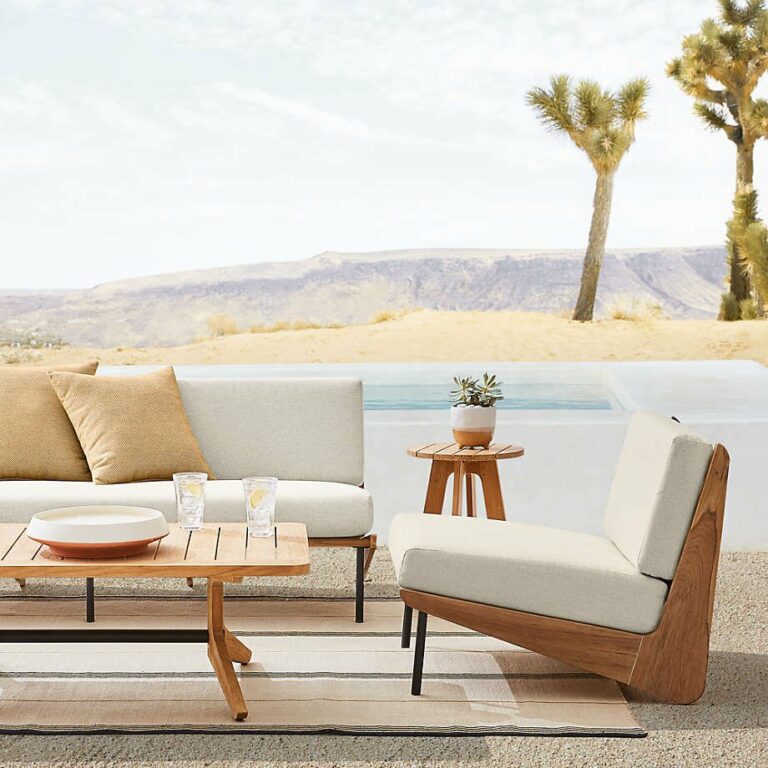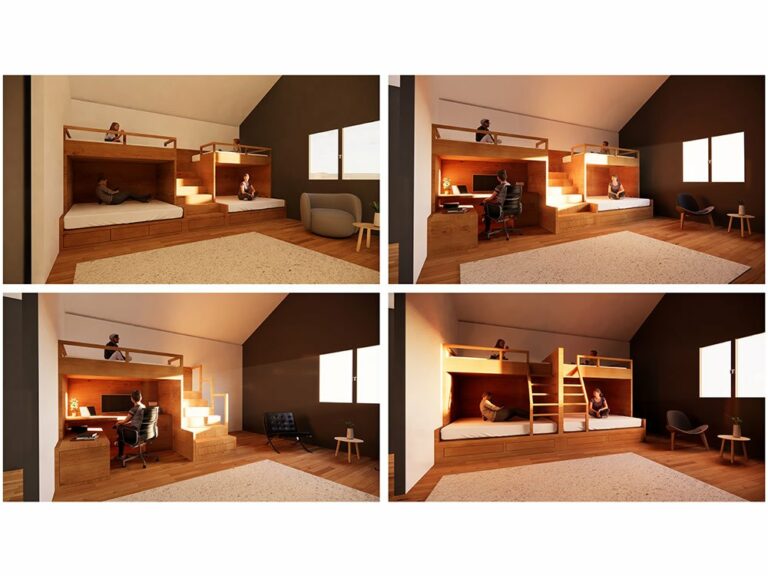Eco-Friendly Outdoor Furniture For Educational Spaces
Today we discuss Eco-Friendly Outdoor Furniture For Educational Spaces. Are you interested in establishing an outdoor educational area that is environmentally friendly? You’re in for a treat! Numerous eco-conscious furniture choices offer both comfortable seating and support sustainability efforts.
Curious about what eco-friendly furniture options are suitable for outdoor educational spaces? Let’s delve into the available options. From utilizing recycled materials to selecting sustainable wood, we will identify the top selections that match your eco-friendly aspirations. Prepare to convert your outdoor area into an educational oasis that encourages learning while also advocating for a more sustainable world.
Eco-Friendly Outdoor Furniture For Educational Spaces:
Educational institutions around the globe are recognizing the growing importance of outdoor learning environments. These spaces provide students with opportunities to engage with nature, participate in hands-on learning, and cultivate a greater respect for the environment. When outfitting these outdoor educational areas, it is essential to give preference to environmentally friendly options that align with sustainable principles.
This article will explore different eco-conscious furniture selections that are ideal for outdoor educational settings. From recycled materials to responsibly sourced wood, these choices not only promote environmental consciousness but also contribute to creating a nurturing and sustainable learning atmosphere.
1. Recycled Plastic Furniture
Recycled plastic furniture is an excellent choice for outdoor educational spaces. Made from materials such as high-density polyethylene (HDPE), which is derived from recycled plastic bottles and containers, this type of furniture offers several benefits:
- Environmentally friendly: By using recycled materials, we reduce the demand for new plastic production and divert waste from landfills.
- Durability: Recycled plastic furniture is resistant to fading, cracking, and rotting, making it ideal for outdoor use.
- Low maintenance: Unlike traditional wood furniture, recycled plastic furniture does not require painting, staining, or sealing.
- Wide range of options: From benches to tables and chairs, recycled plastic furniture is available in various styles and designs to suit different educational settings.
2. Sustainable Wood Furniture
Sustainable wood furniture is another eco-friendly option for outdoor educational spaces. When selecting wood furniture, it is crucial to look for certifications such as Forest Stewardship Council (FSC). These certifications ensure that the wood is responsibly sourced from well-managed forests and meets strict environmental and social criteria. Benefits of sustainable wood furniture include:
- Renewable resource: Wood is a renewable material, and when sourced responsibly, it can be an environmentally friendly choice.
- Natural beauty: Wood furniture adds a warm and natural aesthetic to outdoor learning spaces.
- Longevity: With proper care, well-constructed wooden furniture can last for many years, reducing the need for frequent replacements.
- Customizable: Sustainable wood furniture can be crafted to fit specific requirements, allowing for flexibility in design and functionality.
3. Bamboo Furniture
Bamboo is a fast-growing grass that has gained popularity as a sustainable alternative to traditional wood. It offers several advantages, making it an attractive option for furnishing outdoor educational spaces:
- Rapid growth: Bamboo can be harvested in as little as three to five years, compared to decades for most hardwood trees.
- Strength and durability: Bamboo furniture is known for its strength and durability, making it suitable for outdoor use.
- Renewable and regenerative: Bamboo plants can regenerate quickly, making them a highly sustainable choice.
- Low environmental impact: Bamboo requires minimal water, pesticides, and fertilizers in comparison to other crops.
- Versatility: Bamboo can be shaped into various furniture designs, offering a range of options for outdoor educational spaces.
4. Metal Furniture
Metal furniture can also be an eco-friendly option for outdoor educational spaces, as long as it is manufactured and treated with sustainability in mind. Look for furniture made from recycled metals or those certified for low environmental impact. Advantages of metal furniture include:
- Durability: Metal furniture is highly resistant to weather conditions, ensuring long-lasting use in outdoor environments.
- Recyclability: At the end of its life cycle, metal furniture can be recycled, reducing waste and resource consumption.
- Strength and stability: Metal furniture offers robustness and stability, making it suitable for heavy use in educational settings.
- Design options: Metal furniture comes in various designs, allowing for customization to match the aesthetics and requirements of outdoor educational spaces.
5. Natural Fiber Furniture
Natural fiber furniture, such as rattan or wicker, can bring a touch of elegance and comfort to outdoor educational spaces. When opting for natural fiber furniture, consider the following:
- Sustainable sourcing: Ensure that the natural fibers used in the furniture are grown and harvested sustainably.
- Biodegradability: Natural fibers are biodegradable and have a minimal impact on the environment when disposed of properly.
- Comfort and aesthetics: Natural fiber furniture provides a cozy and inviting atmosphere, contributing to a positive learning environment.
- Low maintenance: Regular cleaning and occasional maintenance will ensure the longevity of natural fiber furniture.
6. Stone and Concrete Furniture
Stone and concrete furniture can add a rugged and durable element to outdoor educational spaces. While these materials may not be considered traditional eco-friendly options, there are ways to make their use more sustainable:
- Local sourcing: Choose stone or concrete sourced from local suppliers to reduce transportation-related carbon emissions.
- Durability: Stone and concrete furniture are highly durable, reducing the need for frequent replacements.
- Recycled content: Look for stone or concrete materials that incorporate recycled content, further reducing environmental impact.
- Design versatility: Stone and concrete can be molded into various shapes and sizes, allowing for creative and unique furniture designs.
7. Outdoor Cushions and Fabrics
In addition to furniture, the choice of cushions and fabrics for outdoor educational spaces can also contribute to eco-friendliness. Consider the following options:
- Recycled fabrics: Look for cushions and fabrics made from recycled materials, such as recycled plastic bottles or reclaimed textiles.
- Organic and natural fibers: Choose cushions and fabrics made from organic cotton, hemp, or other sustainable and biodegradable materials.
- UV-resistant and weatherproof: Ensure that the fabrics used are designed to withstand outdoor conditions and have a long lifespan.
- Low-toxicity dyes: Opt for fabrics that use low-toxicity dyes, reducing the environmental impact during the manufacturing process.
8. Modular and Flexible Furniture
Modular and flexible furniture offers adaptability and versatility, making it suitable for dynamic outdoor educational spaces. By choosing furniture that can be rearranged or adjusted, educators can create different learning environments and accommodate various activities. Benefits of modular and flexible furniture include:
- Optimal space utilization: Modular furniture can be easily rearranged to make the most efficient use of the available outdoor space.
- Enhanced engagement: Flexible furniture allows for dynamic learning environments, promoting student engagement and interaction.
- Longevity: Modular furniture is designed to withstand frequent rearrangement, ensuring durability and long-term use.
- Easy storage: Some modular furniture options can be conveniently stacked or nested, simplifying storage when not in use.
9. Collaborative and Learning-Centric Furniture
Creating a collaborative and inclusive learning environment is crucial for outdoor educational spaces. Furniture designed to facilitate group work and interactive learning can greatly enhance the educational experience. Consider the following options:
- Collaboration tables: Round or hexagonal tables with shared work surfaces encourage teamwork and discussion.
- Bench seating: Long benches provide flexible seating arrangements for group work or outdoor lectures.
- Amphitheater seating: Tiered seating or outdoor classroom designs can facilitate presentations and group activities.
- Whiteboards or chalkboards: Incorporating writable surfaces allows for visual learning and interactive lessons.
10. DIY and Upcycled Furniture
For a truly unique and eco-friendly touch, consider DIY (Do-It-Yourself) or upcycled furniture. These options promote creativity and resourcefulness while reducing waste. Benefits of DIY and upcycled furniture include:
- Cost-effectiveness: DIY and upcycled furniture can be an affordable alternative, especially for educational institutions with limited budgets.
- Unique designs: Handcrafted or repurposed furniture can add character and personality to outdoor learning spaces.
- Engaging projects: Involving students in DIY projects fosters a sense of pride, ownership, and environmental awareness.
- Customizability: DIY furniture allows for customization to fit specific needs and preferences.
- Skills development: DIY projects provide opportunities for students to learn practical skills and engage in hands-on experiences.
By incorporating these eco-friendly furniture options into outdoor educational spaces, educational institutions can create sustainable learning environments that promote environmental consciousness and inspire future generations to become responsible stewards of the planet.
Faqs for Eco-Friendly Outdoor Furniture For Educational Spaces:
Recycled plastic furniture is a sustainable option that minimizes waste by utilizing post-consumer plastics. It is durable, easy to clean, and resistant to moisture, UV rays, and pests. Additionally, using recycled plastic furniture helps reduce dependence on virgin materials and lowers carbon emissions.
Absolutely! Eco-friendly seating options include benches made from sustainably sourced wood or recycled materials. These materials often require less maintenance and can withstand various weather conditions, making them ideal for outdoor settings.
Consider tables made from reclaimed wood or bamboo, as these materials are environmentally friendly and provide a unique aesthetic appeal. Reclaimed wood tables, in particular, give new life to old timber and help to reduce deforestation.
Yes, several eco-friendly alternatives to traditional plastic chairs exist. Look for chairs made from recycled materials, such as recycled plastic or aluminum. These options are not only sustainable but also durable and resistant to rust and fading.
Absolutely! Look for outdoor furniture that uses fabrics made from recycled or organic materials. These fabrics are often resistant to mold, mildew, and fading, making them suitable for outdoor educational spaces where they may be exposed to the elements.
Using furniture made from sustainable materials helps reduce the environmental impact by minimizing resource extraction and waste production. Additionally, eco-friendly furniture often promotes healthier indoor and outdoor environments, contributing to the well-being of students and educators in educational spaces.
When selecting eco-friendly furniture, look for certifications such as FSC (Forest Stewardship Council) certification for wood products, GREENGUARD certification for low chemical emissions, or Cradle to Cradle certification for products designed with circular economy principles in mind. These labels ensure that the furniture has met specific sustainability criteria.
Final Thoughts
when designing outdoor educational spaces, it is crucial to consider eco-friendly furniture options that promote sustainability and environmental consciousness. Opting for furniture made from recycled materials, such as plastic or reclaimed wood, can significantly reduce the carbon footprint. Additionally, choosing furniture that is easily recyclable or biodegradable ensures a more sustainable lifecycle. Incorporating eco-friendly features like solar-powered charging stations or rainwater harvesting systems further enhances the environmental impact of these spaces. By selecting eco-friendly furniture options, we can create outdoor educational spaces that not only provide functionality and comfort but also contribute to a greener and more sustainable future.



